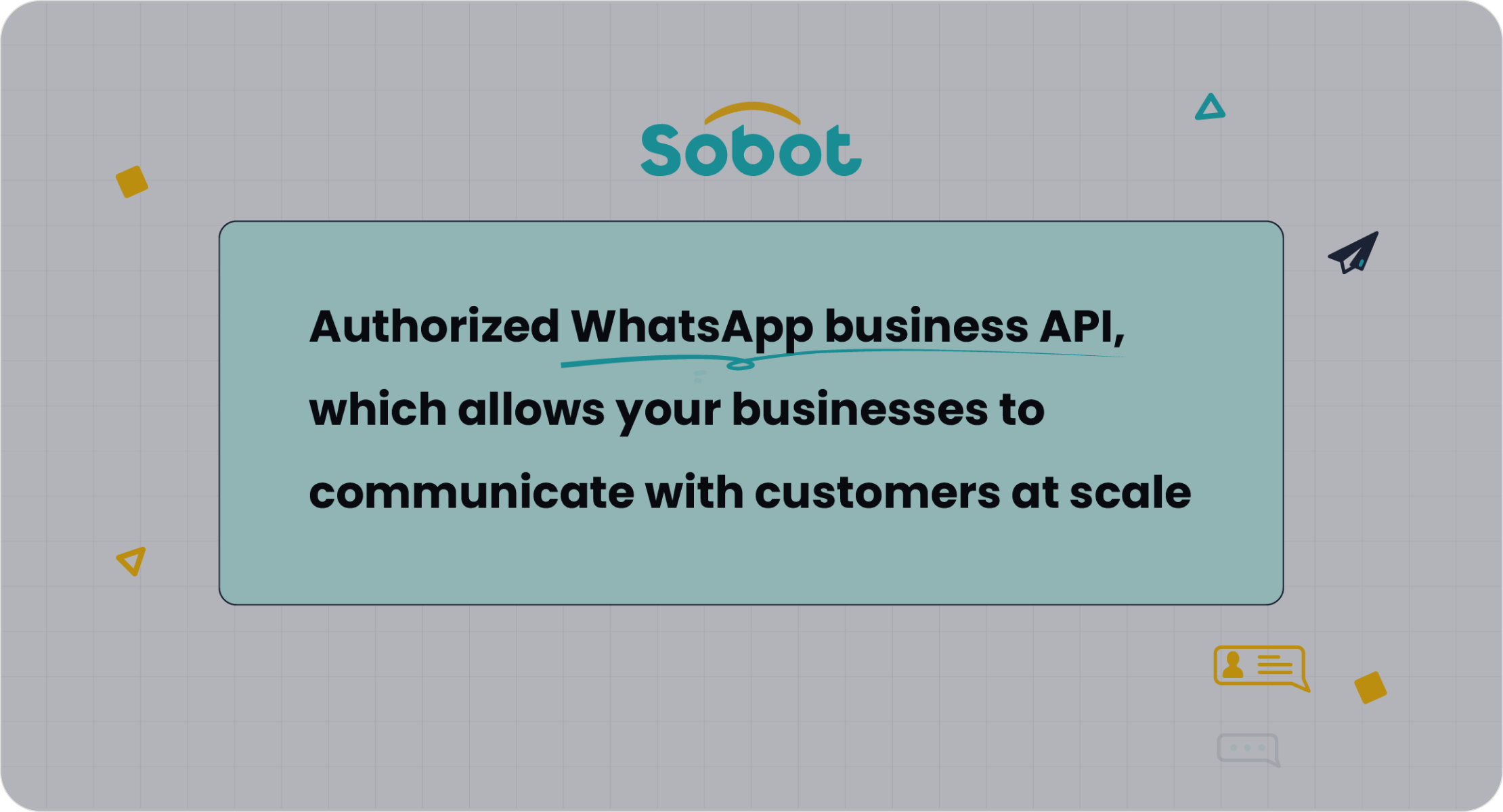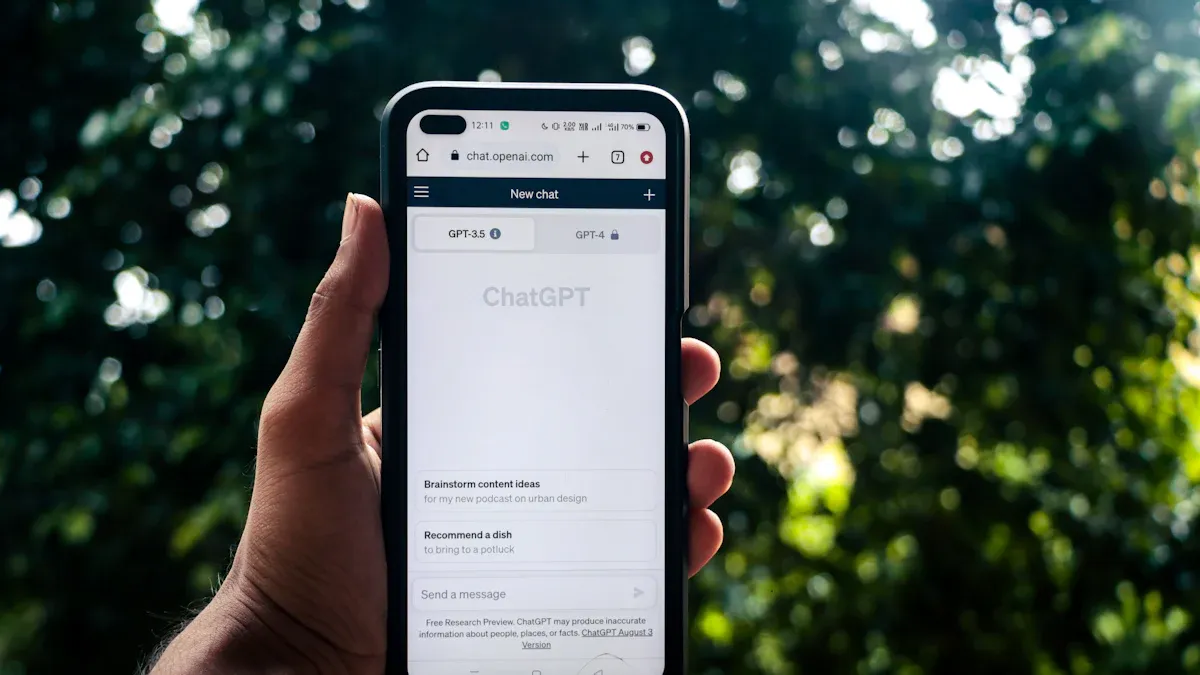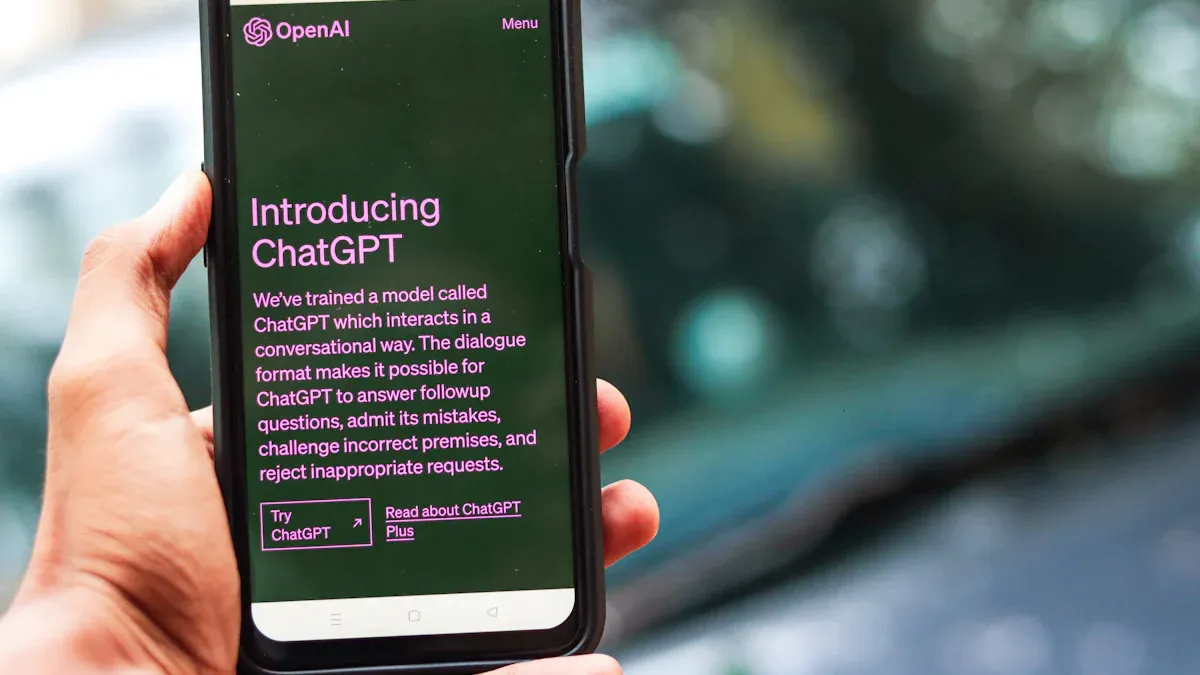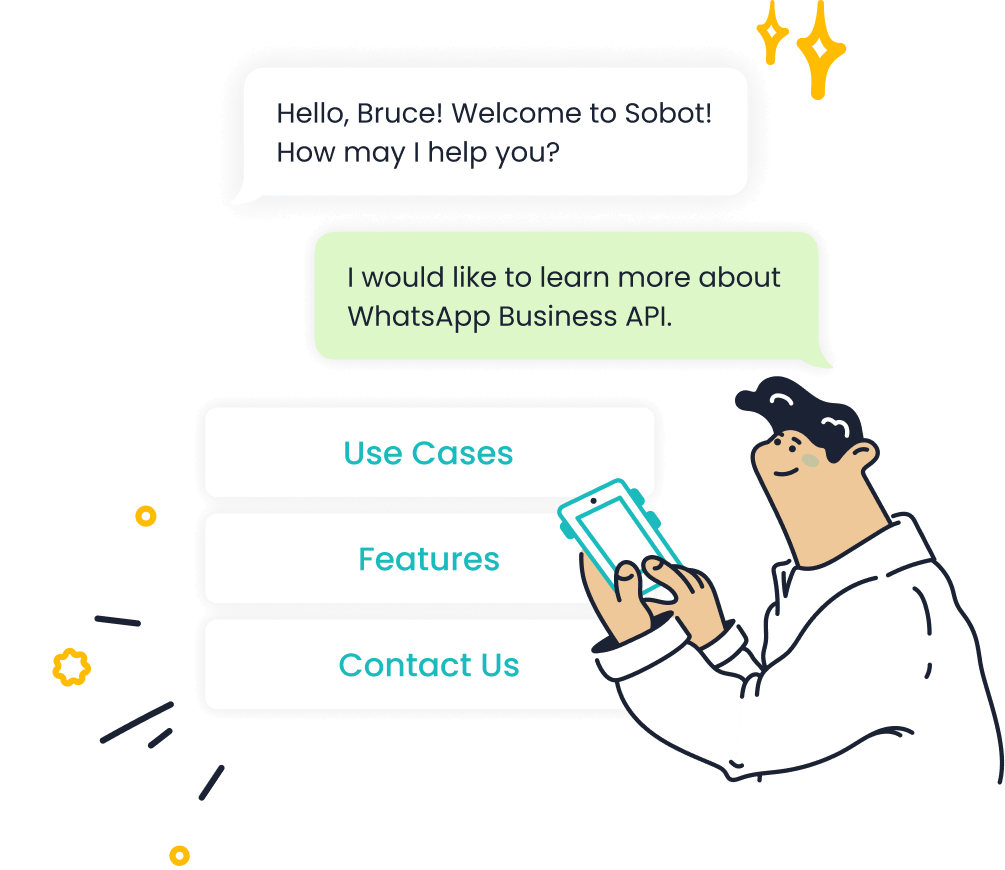Top WhatsApp Chatbot Example Tips for Better User Engagement

Did you know WhatsApp messages have a 98% open rate and users reply in under a minute? If you want to boost engagement, you need to design your WhatsApp chatbot for real conversations. Strong user engagement starts when you design a chatbot that feels human, responds fast, and helps customers get what they need. Over 200 million businesses use WhatsApp, but only those who design smart chatbots—like the WhatsApp chatbot example from Sobot AI—see real results. Sobot helps you design WhatsApp chatbots that drive engagement and keep users coming back.
Audience Insights
Define Users
If you want your WhatsApp chatbot to succeed, you need to know who your users are. Start by asking yourself: Who will chat with your business on WhatsApp? Are they shoppers looking for deals, customers needing support, or fans following your latest updates? With nearly 3 billion people using WhatsApp every month and over 140 billion messages sent daily, your audience could be huge. But not everyone wants the same thing from an engaging WhatsApp channel.
You can look at how other industries define their users. For example, fintech companies often segment users by their questions or where they are in the onboarding process. Insurance businesses might focus on how often someone files a claim or needs help with a policy. Even agriculture apps group users by the type of crops they grow or the problems they face. Here’s a quick look:
| Industry | User Segmentation Criteria | Chatbot Focus | Benefit |
|---|---|---|---|
| Fintech | Customer queries, onboarding | FAQs, account help | Better engagement |
| Insurance | Claims frequency, process steps | Claims, policy info | Less service pressure |
| Agriculture | Crop type, problem-specific | Diagnosis, tailored advice | Cost savings, accuracy |
When you define your user segments, you can build a WhatsApp chatbot that feels personal and helpful. Sobot’s WhatsApp solution lets you set up these segments easily, so your chatbot always knows who it’s talking to.
Gather Preferences
Once you know your users, you need to learn what they like. Gathering preferences is key for any engaging WhatsApp channel. You can use surveys, feedback forms, or even quick polls right inside WhatsApp. Analytics tools help you spot trends, like which products get the most questions or which support topics come up again and again.
Try using different methods to collect insights:
- Micro surveys during chat sessions
- Analyzing support tickets for common issues
- Social media listening to catch trending topics
- A/B testing chatbot flows to see what works best
Advanced analytics, like those in Sobot’s WhatsApp chatbot, can group users by behavior and spot patterns using AI. This helps you adjust your strategy and keep user engagement high. For example, businesses using WhatsApp see a 98% open rate and up to 127% more sales, showing how important it is to match your chatbot to user needs. When you gather preferences and act on them, you build an engaging WhatsApp channel that supports your WhatsApp-led growth strategy.
Chatbot Design Basics
Clear Objectives
When you start with chatbot design for WhatsApp, you need clear goals. Ask yourself: What do you want your chatbot to do? Do you want it to answer questions, help with orders, or send updates? Setting clear objectives helps you avoid confusion and keeps your chatbot focused.
- People want chatbots to deliver information that feels personal.
- Too many messages can annoy users, so control how often your chatbot sends updates.
- Privacy matters. Users worry about who sees their data and want to know how you use it.
- Trust is key. Users trust chatbots more when they know a credible company, like Sobot, stands behind the design.
Studies show that when you set clear objectives for chatbot design, you build trust and keep users engaged. For example, research on WhatsApp chatbots found that performance, personalization, and privacy control are top reasons people keep using them. If you want your WhatsApp chatbot to succeed, focus on these goals from the start. Sobot’s WhatsApp chatbot design lets you set up rules for message frequency, privacy, and personalization, so your users always feel in control.
Tip: Test your chatbot design over time. Check if it meets your goals and adjust as needed.
Brand Alignment
Your WhatsApp chatbot should sound and act like your brand. If your brand is friendly and fun, your chatbot design should use the same tone. If your brand is serious and professional, keep the chatbot design clear and direct. This makes your chatbot feel like a real part of your business.
Data shows that chatbots aligned with brand identity boost engagement. Brands using 24/7 chatbot support see retention rates rise by up to 30%. When you use personalization and keep the chatbot design consistent with your brand, users feel more connected. Features like quizzes, challenges, and rewards can turn users into loyal fans. Sobot’s chatbot design tools help you match your brand’s voice and style, making every WhatsApp conversation feel unique.
A well-aligned chatbot design also improves user experience. Users trust brands that keep the same tone across all channels. With Sobot, you can easily set up your WhatsApp chatbot to reflect your brand, from greetings to product recommendations.
WhatsApp Chatbot Best Practices
Natural Language
When you build a WhatsApp chatbot, you want it to talk like a real person. Natural language makes every conversation flow smoothly. Users feel more comfortable when your chatbot understands what they say and responds in a friendly way. Research shows that using techniques like tokenization, word embeddings, and smart prediction helps your chatbot design understand users better and give more accurate answers. For example, Vodafone Germany used these methods and saw a 57% query resolution rate and a 10% shift from calls to WhatsApp messaging. Samsung’s WarrantyBot handled 14,000 messages in six weeks with a 98% satisfaction rate.
Sobot’s WhatsApp chatbot best practices focus on natural, conversational flows. The chatbot uses advanced AI to understand what users mean, not just what they type. This makes every interaction feel personal and keeps engagement high. When you design your chatbot with natural language, you help users get answers faster and make your WhatsApp channel more engaging.
Guided Flows
A good WhatsApp chatbot doesn’t leave users guessing. Guided flows help users move step by step through each conversation. You can offer options like “Check Order Status,” “Talk to Support,” or “Browse Products.” This structure keeps the conversation flow clear and helps users reach their goals without confusion.
Case studies show that guided flows boost user engagement and satisfaction. Sephora’s Virtual Artist and KLM’s Messenger Chatbot both use guided flows to offer options and quick responses. Users stay longer and come back more often. Sobot’s chatbot design lets you set up menu-driven options and step-by-step flows, so every user gets a smooth experience. When you design your WhatsApp chatbot with guided flows, you make it easy for users to find what they need and enjoy the interaction.
Tip: Always test your conversation flow with real users. Adjust the options and steps to match what they want most.
Interactive Elements
Interactive elements turn a simple chat into a fun experience. Quick replies, buttons, and multimedia make your WhatsApp chatbot more dynamic. You can offer options for users to tap, send images or videos, and even share catalogs or carts. These features make the conversation flow faster and keep users engaged.
- Quick replies and buttons help users choose options without typing.
- Multimedia like images and videos explain things better and make the chatbot more interesting.
- WhatsApp Business API supports all these features, so you can create an engaging WhatsApp chatbot that stands out.
Sobot’s WhatsApp chatbot best practices include using interactive elements to boost engagement. You can offer options for users to pick, send product images, or share order updates with videos. This makes every interaction feel special and keeps users coming back for more.
Personalization for User Engagement

Data-Driven Responses
You want your WhatsApp chatbot to feel smart and helpful. Data-driven responses make this possible. When you design your chatbot with analytics, you can personalize the experience for every user. Sobot’s WhatsApp solution uses real-time data to understand what each user needs. This means your chatbot can answer questions faster and with more accuracy.
Let’s look at how you can measure success:
| Metric | Description | Why It Matters for Personalization |
|---|---|---|
| Customer Satisfaction Score (CSAT) | Shows how happy users are after chatting. | High CSAT means your chatbot meets user needs. |
| Fallback Rate | Counts how often chatbot fails to answer. | Low rate means better, more personal responses. |
| Conversion Rate | Tracks users who finish actions, like buying or signing up. | High rate shows your chatbot guides users well. |
| Lead Capture Rate | Measures how many users share info for follow-up. | High rate means your chatbot engages users. |
| Abandonment Rate | Shows how many users leave before finishing. | Low rate means smooth, engaging conversations. |
When you use these metrics, you see how well your WhatsApp chatbot personalizes responses. Sobot’s analytics tools help you track these numbers and improve your chatbot design. You can spot trends, fix weak spots, and keep user engagement high.
Tip: Always review feedback reports. They show what users like and where you can improve your responses.
Dynamic Recommendations
Dynamic recommendations help you personalize the experience for every user. Your WhatsApp chatbot can suggest products, services, or answers based on what users do or ask. Sobot’s chatbot design uses AI to learn from each conversation. This means your business can offer the right help at the right time.
OPPO, a global smart device brand, used Sobot’s WhatsApp chatbot to boost engagement. During busy shopping seasons, OPPO’s chatbot handled common questions and gave smart product suggestions. This helped users get quick answers and find what they wanted. OPPO saw an 83% chatbot resolution rate and a 94% positive feedback score. Their repurchase rate jumped by 57%. These results show how dynamic recommendations and data-driven responses can drive high levels of user engagement.
When you design your WhatsApp chatbot to personalize the experience, you build trust and keep users coming back. Sobot’s tools let your business create engaging, helpful conversations that feel unique to every user.
Privacy and Trust
Data Security
You want to feel safe when you chat with a WhatsApp chatbot. Data security is a big part of building trust. When you use WhatsApp for customer support or shopping, you share personal details. You expect companies to protect this information. Studies show that users trust chatbots more when they know their data is safe. People see chatbots as social agents, so privacy concerns matter a lot. If you think your data is at risk, you may stop using the service.
For example, users in health education say they want the same privacy as when they talk to a doctor. If a WhatsApp chatbot keeps your information secure, you feel more confident. Research also shows that trust in chatbots leads to higher satisfaction. When you know your data is protected, you enjoy the experience more. Sobot’s WhatsApp solution uses strong encryption and follows strict privacy rules. This helps you trust the chatbot and keeps your information safe.
Tip: Always check if the WhatsApp chatbot you use explains how it protects your data.
User Consent
You should always know what you agree to when you use a WhatsApp chatbot. Clear user consent is not just a rule—it helps you feel in control. Businesses that ask for your permission before sending messages build better relationships. This leads to higher engagement rates.
- Companies that get your opt-in avoid legal trouble and build trust.
- When you give consent, you know what to expect from the WhatsApp chatbot.
- WhatsApp has strict rules to stop spam and protect your privacy.
- Using AI-powered chatbots to guide you through the opt-in process makes things clear and easy.
- Sobot’s WhatsApp chatbot helps businesses collect and manage consent, so you always stay informed.
When you see a company respect your choices, you feel valued. This makes you more likely to keep using their WhatsApp channel. If you want a better experience, look for chatbots that ask for your consent and explain how they use your data.
Continuous Improvement
Feedback Loops
You want your WhatsApp chatbot to get better over time. Feedback loops help you do this. When users chat with your WhatsApp chatbot, they can leave ratings, answer quick surveys, or give comments. You can use this feedback to spot what works and what needs fixing. For example, in one case study, a chatbot improved its answers by almost 10% for medical questions and over 20% for logistics questions just by using expert feedback and making small edits. This shows that listening to users and experts helps your chatbot give more accurate and complete answers.
Sobot makes it easy to collect feedback right inside WhatsApp. You can add star ratings, emojis, or short surveys after each chat. This helps you keep measuring user engagement and see how your chatbot’s performance changes. When you use feedback loops, you make sure your WhatsApp chatbot always learns and improves.
Tip: Ask users for feedback often. Even a simple “Was this helpful?” can give you great ideas for improvement.
Analytics
Analytics are your secret weapon for WhatsApp chatbot optimization. With the right tools, you can track how your chatbot performs every day. Sobot’s analytics dashboard lets you see key numbers like response time, customer satisfaction, and how many questions your chatbot solves. You can also check how many users finish a chat, how many leave early, and what topics come up most.
Here’s a quick look at important metrics you can track:
| Metric Category | Examples of Metrics | Why It Matters |
|---|---|---|
| User Engagement | Total Conversations, Message Open Rate | Shows how users interact |
| Chatbot Efficiency | Response Time, CSAT, Accuracy Rate | Measures chatbot performance |
| Business Impact | Conversion Rate, Retention Rate, Revenue per Message | Tracks business results |
Organizations using advanced analytics for WhatsApp chatbots see up to 70% lower service costs and 40% higher customer satisfaction. Conversion rates can jump by 35% when you use features like sentiment analysis and A/B testing. Sobot’s analytics tools help you spot trends, test new ideas, and keep measuring user engagement for ongoing optimization.
Note: Regularly update your WhatsApp chatbot based on analytics and feedback. Testing new flows and checking the data helps you keep performance high.
WhatsApp Chatbot Example with Sobot


Customer Support
Imagine you need help with your new phone. You send a message on WhatsApp and get a quick answer from a friendly chatbot. This is not just any chatbot—it’s a Sobot-powered WhatsApp chatbot example. You can ask about your order, warranty, or how to set up your device. The chatbot gives you answers right away, so you don’t have to wait for a human agent. If you need more help, the chatbot connects you to the right person in the customer support channel.
OPPO, a global smartphone brand, uses this kind of WhatsApp chatbot example. During busy shopping seasons, OPPO’s chatbot handled most questions by itself. It solved 83% of customer issues without human help. Customers gave a 94% positive feedback score. OPPO’s repurchase rate went up by 57%. These numbers show how a WhatsApp chatbot example can make customer support fast and easy.
You get answers in seconds, not hours. That’s the power of a smart WhatsApp chatbot example.
Ecommerce Use Case
You want to shop online and get help right away. With a Sobot WhatsApp chatbot example, you can do just that. The chatbot helps you find products, check your order status, and even get special deals. You can see pictures, tap buttons, and get updates—all inside WhatsApp.
Here’s what happens when ecommerce brands use a WhatsApp chatbot example from Sobot:
- Omnichannel support, including WhatsApp, cuts wait times by 35%.
- AI chatbots give fast, accurate answers, making shopping easier.
- Two-way chats and proactive messages boost customer loyalty.
- Brands like Renogy and L Gaming saw more questions answered and higher user engagement.
Check out these real results:
| Metric / Client Example | Improvement / Result |
|---|---|
| Conversion rate boost | 3x increase |
| Inquiry resolution rate | 70% of inquiries resolved |
| Customer satisfaction (OPPO) | 93% CSAT achieved |
| ROI | 234% return on investment |
A WhatsApp chatbot example from Sobot helps you shop, ask questions, and get support—all in one place. You get a better experience, and businesses see more sales and happier customers.
You can boost user engagement on WhatsApp by knowing your audience, designing clear chatbot flows, and using interactive features. When you follow these best practices, you build trust and keep engagement high. Peer-reviewed models show that strong partnerships, shared power, and ongoing feedback lead to measurable engagement benefits for communities. Sobot’s WhatsApp solutions help you scale your strategy and improve every conversation. Try these tips, track your results, and keep improving for even better user engagement. Learn more about community engagement frameworks.
FAQ
What is a WhatsApp chatbot example?
A WhatsApp chatbot example is a real or demo chatbot that shows how businesses use WhatsApp to chat with customers. You can see how it answers questions, helps with orders, or gives updates. Sobot offers many WhatsApp chatbot examples for customer support and ecommerce.
How can a WhatsApp chatbot example improve user engagement?
A WhatsApp chatbot example can boost engagement by giving fast answers, using friendly language, and offering interactive features like buttons or quick replies. Sobot’s WhatsApp chatbot examples show up to 94% positive feedback and higher repurchase rates for brands like OPPO.
Is it hard to set up a WhatsApp chatbot example with Sobot?
No, you can set up a WhatsApp chatbot example with Sobot in just a few steps. Sobot’s platform guides you through the process. You can use templates, add your brand’s style, and start chatting with customers quickly.
What features should I look for in a WhatsApp chatbot example?
Look for features like 24/7 support, smart chat routing, bulk messaging, and data analytics. Sobot’s WhatsApp chatbot examples include all these, plus official WhatsApp Business Account Certification for trust and security.
Where can I see a real WhatsApp chatbot example in action?
You can check out Sobot’s website for live WhatsApp chatbot examples. Brands like OPPO use Sobot’s WhatsApp chatbot example to handle thousands of chats daily. See more at Sobot WhatsApp Solutions.
See Also
Simple Steps To Add Chatbots On Your Website
The Impact Of WhatsApp Chat On User Interaction
Building Effective Chatbots To Enhance Website Performance
